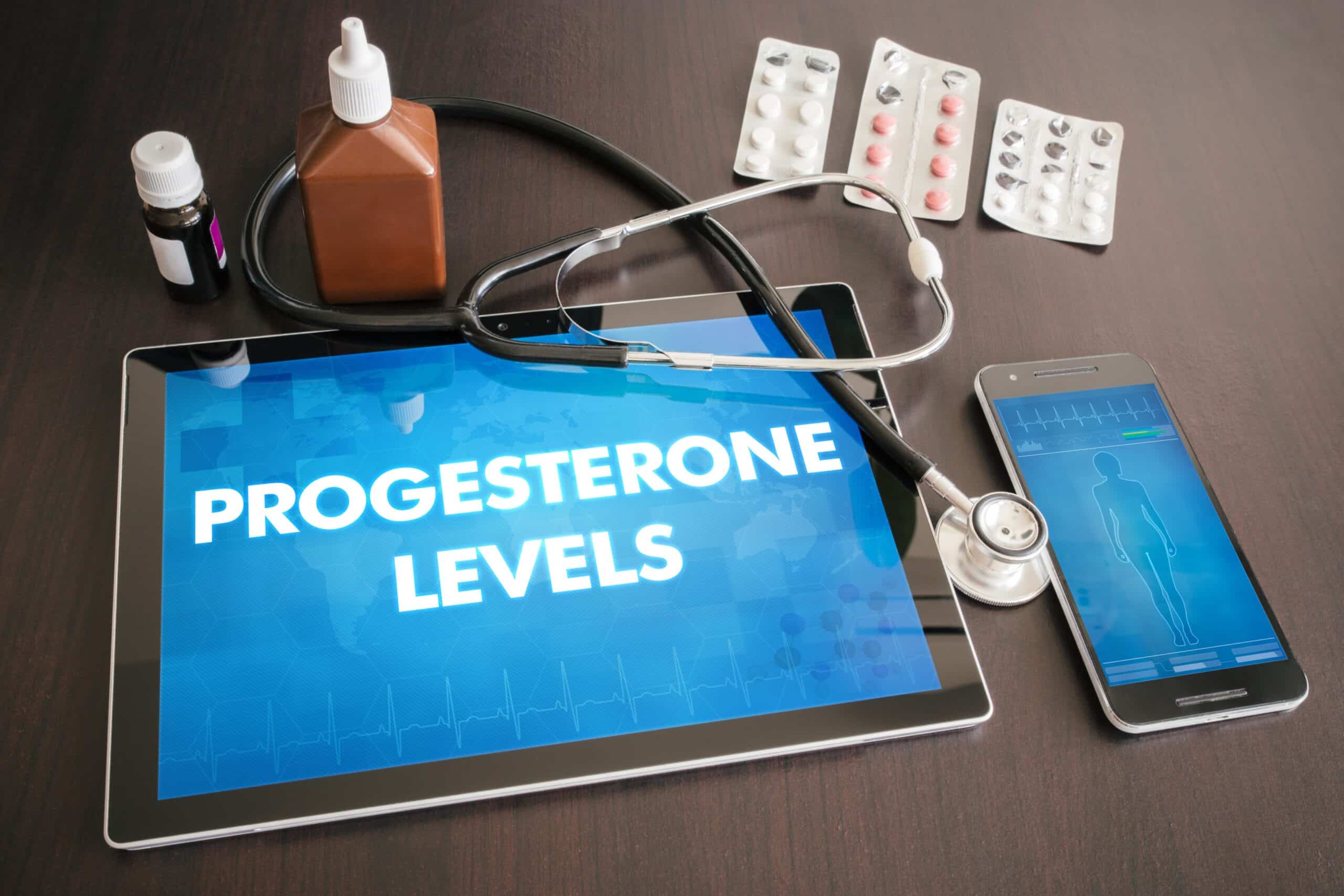Ignored by many practitioners, progesterone is meant to be abundant. Much confusion can be attributed to this common portrayal of the menstrual cycle:
Graph/Image Credit: Clue, found at: https://iapmd.org/blog-posts/2021/8/27/what-luteal-looks-like-for-me?fbclid=IwAR3phMbECEn9_o3CsZ9oN2RR6LcQw1ZQC3CrHksaa64LrEtIs3SfN3XOS4Y
While the rise and fall of hormones are depicted correctly, this graphic implies that the only significant level of progesterone occurs in the 2nd half of the cycle during the luteal phase. The black line depicting progesterone hovers close to nothing during the first half of the cycle. To make this compact image, progesterone in nanograms (1000x that of estradiol) is scrunched. A correct graph would show progesterone in much greater quantity than estradiol.
This graph omits many other sources of progesterone. The progesterone in the first half cycle comes from the adrenal glands. Progesterone is also produced outside of organs. Schwann cells which protect the nervous system tissue make and use progesterone with progesterone going into circulation. Progesterone can be produced independently in the brain from cholesterol. Each cell, in a process called intracrinology, makes sex and adrenal hormones that may never reach the blood.
This image contributes to the notion that the most important hormone women need, and use is estradiol. This concept causes women to be mistreated and creates serious hormone imbalances. Hysterectomized women are often given estrogen supplements only when the need for surgery was created by a long-time progesterone deficit.
Many have no idea of progesterone deficiency. They may understand that there is some importance to balancing the effects of estrogen but do not appreciate how many of their health issues stem from a lack of adequate progesterone.
Here is a questionnaire to check for yourself:
Progesterone Deficiency Questionnaire
Circle each symptom that applies to you
- internally anxious, outwardly calm
- premenstrual backache
- frequent complaining
- endless crying
- breast and/or ovarian cysts
- defective luteal phase
- fibroids
- excessive facial hair on women
- excessive body hair on women
- infanticidal fears
- feelings of loneliness
- maltreatment of newborn baby, harmful, violent thoughts
- absence of maternal instinct and behavior
- nausea during pregnancy
- night sweats
- PCOS (polycystic ovarian disease)
- pre-eclampsia
- rejection of baby
- feelings of resentment
- early aging of the skin
- feelings of uselessness
- vaginal thinning, dryness, and itching
- miscarriage
- temporary psychosis
- breast tenderness and/or mastitis
- premenstrual breast tenderness
- follicular keratosis on backs of arms and legs
- hot flashes/flushes
- erratic menstrual cycle
- excessive menstrual flow
- lack of menstrual periods
- depression after childbirth
- depression during perimenopause/menopause
- irregular menstrual flow
- period pains and/or ovulation cramps
- easily upset, quick to cry
- depression
- panic attacks or panicky feelings
- sense of confusion
- feelings of unreality
- exhaustion
- feelings of guilt
- hair pulling
- hallucinations
- histrionic behavior
- infertility/difficulty in falling pregnant
- feelings of insecurity
- internally upset by criticism
- suicidal thoughts or attempts
- binges
- hair loss from the head (women)
- lack of self-confidence and esteem
- SAD (seasonal affective disorder)
- sleep disturbances
- stress upsets the emotional balance
- irrational fears
- flaking, brittle, and weak nails
- water retention
- feelings of anger
- mood swings
- anxiety
- abdominal bloating
- agitation
- agoraphobia
- blood clots
- brown patches on cheeks
- bruising and capillary breakage
- chronic fatigue
- claustrophobia
- lethargy
- rage
- self-mutilation
- verbal and physical violence
- dark rings under the eyes
- eat or drink to alleviate depression
- difficulty in getting up after enough sleep
- dizziness
- tired all the time
- frequent or regular migraines
- feelings of tension
- cravings for sweet foods
- procrastination
- asthma
- loss of libido
- short term memory loss
- clumsiness
- acne
- insomnia
- nervousness
- palpitations
- inability to concentrate
- hypoglycemia
- manic behavior
- obsessions without compulsions
- cracked heels
- endometriosis
- low libido
- osteoporosis
- paranoia
- prostate problems
- spaced out
- weight gain at puberty/childbirth/menopause
- feelings of aggression
- quick reaction or over-reaction to alcohol
- forget what you’re about to say
- fuzzy brain
- alcohol abuse
- cold hands and feet
- quick-tempered
- frequent or regular headaches
- irritability
- dry skin
- incontinence
- personality changes
- regular epileptic fits
- psoriasis
- shaking or trembling
- itching skin
- varicose veins
- low blood pressure
- constipation
- allergies or sensitivities to foods or chemicals
- brown spots on the backs of hands
- fainting spells
- burning eyes
- misty vision
- painful eyes
You can use the results of this questionnaire to open a discussion with your healthcare practitioner.




